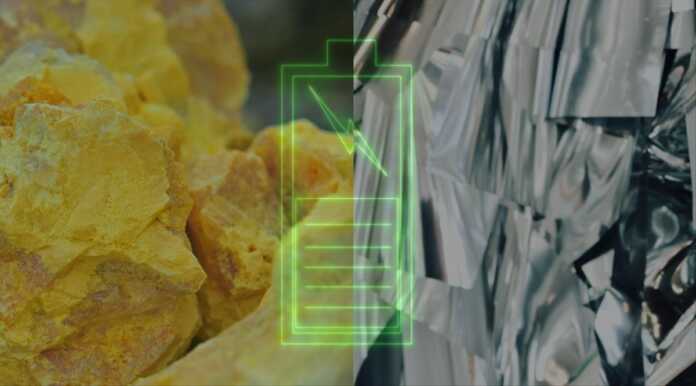Creating batteries using common elements is one of the goals of specialized laboratories around the world. Relying on rare metals and scarce elements causes extremely aggressive activity both in the mining world and in logistics between countries.
That is why MIT euphorically announces that they have managed to design batteries with elements as common as aluminum and sulfur.
The objective is to use these batteries to store the energy produced by solar and wind stations, so that we have enough at times when there is neither Sun nor air. Lithium-ion batteries cannot be used for a long time, they are very expensive, they have a flammable electrolyte, and other solutions such as pumped hydro require a specific topography that is not always available.
The new battery uses aluminum and sulfur as electrodes, with a molten salt electrolyte in between. In the journal Nature they tell the details.
The article has been written by MIT professor Donald Sadoway, along with 15 others at MIT and in China, Canada, Kentucky and Tennessee.
“I wanted to invent something that was better, much better than lithium-ion batteries for small-scale stationary storage and ultimately for [usos] automotive,” explains Sadoway, John F. Elliott Professor Emeritus of Materials Chemistry.
Aluminum is the most abundant metal on Earth, and sulfur is the cheapest of all nonmetals. On the other hand, using salt as an electrolyte makes everything safer since it has relatively low melting points and the chloroaluminate salt doesn’t generate as many dendrites. The result is a battery that is cheap and cannot burn out.
The charge rate depends on the working temperature, and they discovered charges in less than a minute, without losing cells due to short-circuiting of dendrites.
They believe this battery could be used to power a single home or a small to medium-sized business, producing a few tens of kilowatt-hours of storage capacity. It would not be effective for larger installations, but it would be for electric vehicle charging stations.
The technology is already being used as the basis for a new spin-off called Avanti, which has licensed the system’s patents and will begin stress testing, including running hundreds of load cycles.













